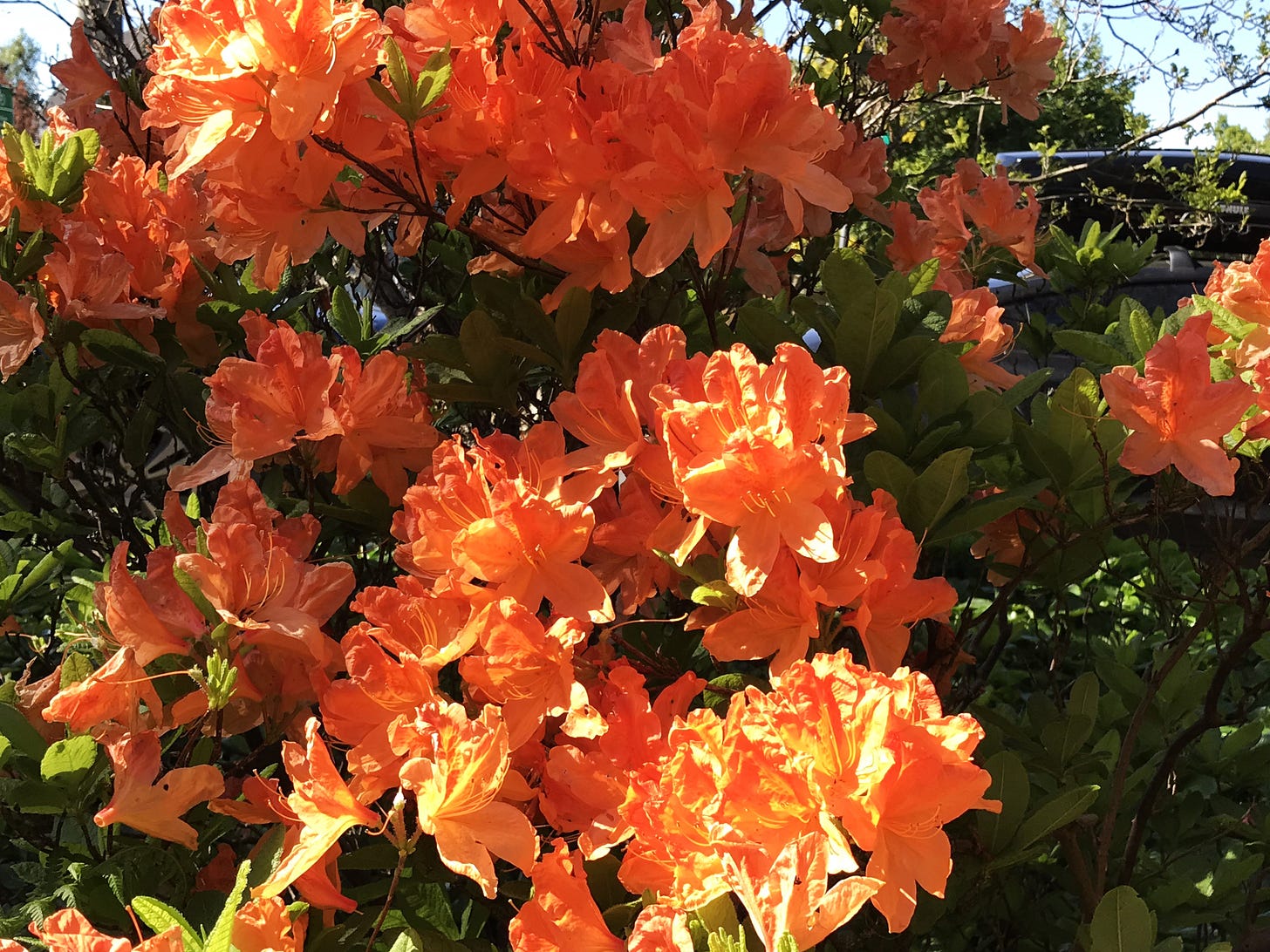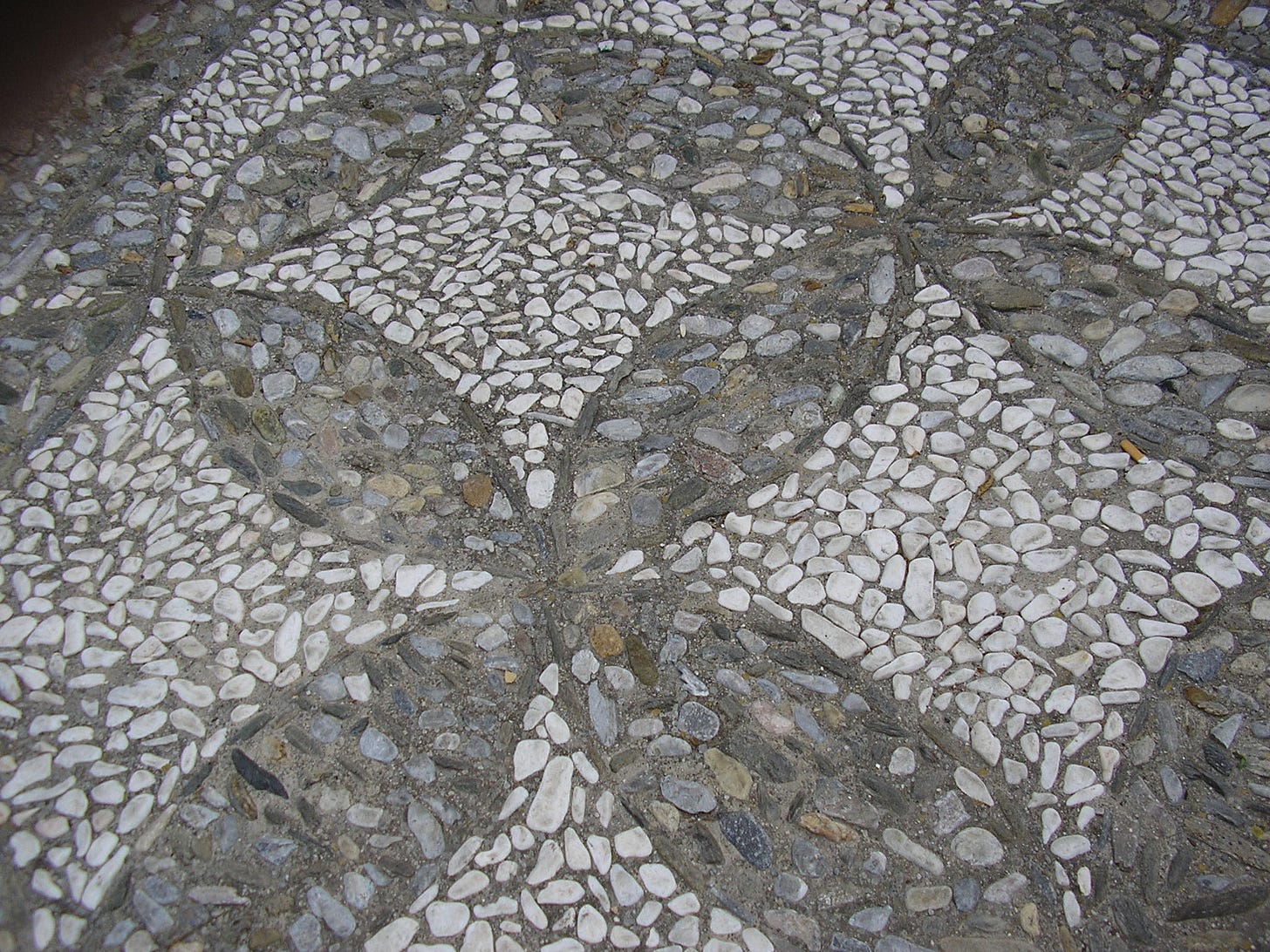Footnotes to a Conversation, May 13, 2024
“There is not a particle of life which does not bear poetry within it.” – Gustave Flaubert
Generative Forgery
Maybe you’d like a print by Monet or Van Gogh to brighten up a dull corner. Head over to Etsy and you’ll be surprised by the huge range of options. “And the artwork itself will hit you differently. Monet's landscapes didn't seem this vivid on a screen projector in art class. Matisse's use of shapes and colours seems more experimental and bold than you remembered. Van Gogh's work is more detailed than it looked in textbooks.”
There are some really lovely prints by William Morris as well – or at least they’re ascribed to William Morris, but a closer look reveals they’ve been generated by AI. The prints may be labelled as being the works of Monet or Van Gogh or Morris, but they’re not – and there is no disclaimer.
“What is forgery, if not an attempt to pass off an imitation as an authentic original? … What happens if we wait years to pass legislation or policy requiring every generated image to bear clear labels and harcoded watermarks? … What happens if we never pass that legislation? The snake eats its own tail. And we scramble a whole generation's understanding of history, tearing at our already threadbare epistemological fabric.” [Maggie Appleton]
A Handful of Pebbles
I remember my delight at discovering sidewalks in the form of mosaics composed of pebbles when I was in Granada, Spain. So much more attractive than cement blocks! The earliest pebble mosaics, composed of natural pebbles of different sizes and colours laid out in a pattern and embedded in plaster or cement, originated in the Orient and were later found in Greece in the 4th and 5th centuries BC. [Brittanica]
Pebble mosaics are predominantly found in warmer southern climates where they don’t face the risk of freezing and cracking. However, Maggie Howarth has found a way to make pebble mosaics that can withstand the British climate. Do take a look at her work which ranges from small, simple pieces to large, elaborate works with tigers, swallows, peacocks, and swirling lines and shapes. [Maggy Howarth]
Home and Away
It can be disconcerting to return home after a journey. The Moroccan explorer Ibn Battuta wrote that, “traveling gives you home in a thousand strange places, then leaves you a stranger in your own land.” Perhaps the trick is to recognize that a journey is circular rather than a straight line and must incorporate not only departure and initiation but also reintegration into one’s life at home. As Rebecca Solnit says, “To travel without arriving would be as incomplete as to arrive without having traveled.”
There is a folk tale of a man who travels the world in search of treasure only to find it when he returns home. “The moral — that true treasure lies at home — initially seems obvious, but what really strikes a chord is the deeper suggestion: that you cannot see that treasure until you have seen the wider world. You cannot know home by staying at home; you must first have gone away.” [Noema]
La Vache Qui Rit
What’s not to like about individually wrapped portions of cheese with a laughing cow with dangling earrings on the label? Now sold in 120 countries around the world, La Vache Qui Rit/Laughing Cow has humble origins. In 1865, Jules Bel opened a small dairy specializing in the aging and distribution of Gruyère and Emmenthal cheeses. 30 years later his sons took over the business and moved it to a larger town with a better transportation network. Then Léon Bel met the Graf family who had invented a new form of processed cheese. The Bel family saw the potential to use up surplus supplies and provide the public with a long-lasting product. They would go on to revolutionize the presentation with individual triangles packed in a box.
La Vache Qui Rit has been produced in Saint Nicholas, Quebec, since 2007. The product continues to be made from real cheese with fewer additives and preservatives than other processed cheeses. [The Laughing Cow, France Today]
Footnotes to a Conversation is a weekly Monday feature covering an assortment of topics that I’ve come across in the preceding week – books, art, travel, food, and whatever else strikes my fancy. I also post occasional articles on other dates, including frequent book reviews and travel tales.
If you share my love of nature, check out EcoFriendly West, an online publication encouraging environmental initiatives in Western Canada, and Nature Companion, a free nature app for Canada’s four western provinces.





